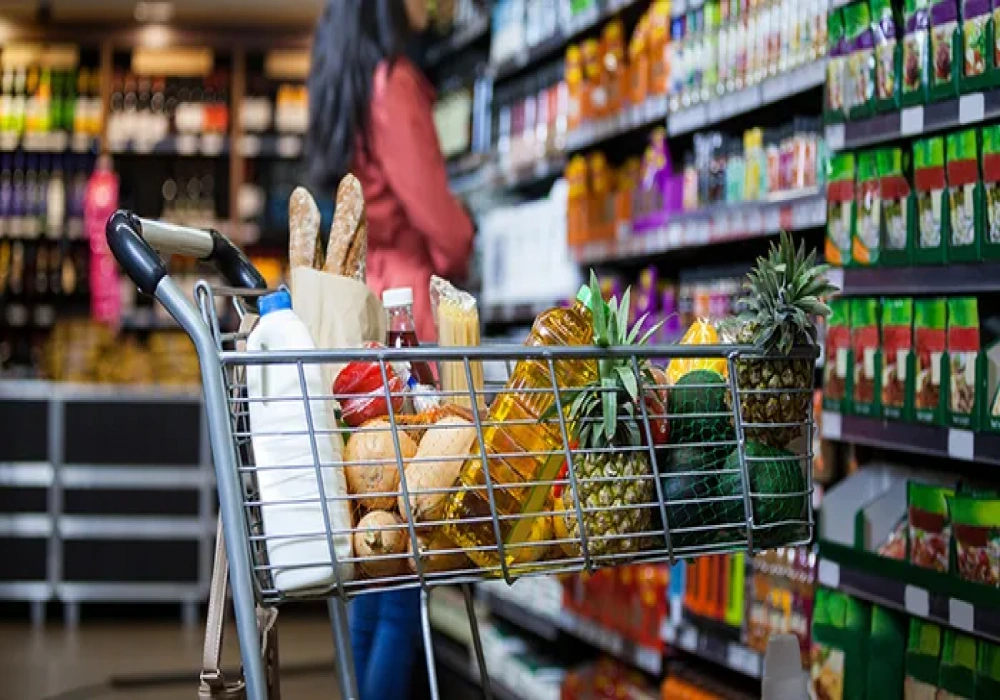
In recent years, the farm-to-table movement has gained powerful momentum across the United States, transforming how restaurants source their ingredients and how consumers think about their meals. What began as a niche trend in a few organic cafés has evolved into a widespread commitment to local, seasonal, and sustainable food sourcing—one that’s influencing both urban eateries and rural diners alike.
Farm-to-table, also known as “farm-to-fork,” emphasizes the use of fresh, locally grown produce, meats, and dairy directly sourced from farmers, ranchers, and artisanal producers. The goal is simple: to shorten the supply chain, reduce the carbon footprint of food transportation, and ensure the highest quality ingredients reach the plate.
Cities like Portland, Austin, and San Francisco have become leading hubs of this movement, with restaurants highlighting the origins of their ingredients on menus. Diners are increasingly choosing establishments that value transparency, ethical farming practices, and seasonality. From small bistros to fine-dining institutions, chefs are building relationships with local growers and crafting menus that change weekly or even daily depending on what’s available.
Chef Rachel Dawson, owner of “Meadow & Mill” in Vermont, explains the appeal: “When I plan a menu, I don’t start with recipes. I start with what the farmers have picked that morning. That’s the beauty of it—freshness you can taste, and a connection to the land that’s becoming rare in today’s food system.”
Beyond taste and ethics, the movement is also tied to health. Studies show that locally grown fruits and vegetables tend to retain more nutrients due to shorter transportation and storage times. Without the need for chemical preservatives or artificial ripening agents, the food remains closer to its natural state, appealing to health-conscious eaters.
The COVID-19 pandemic further accelerated the trend as supply chain disruptions made consumers and restaurants alike more aware of the vulnerabilities of global food logistics. During lockdowns, many turned to local farms, community-supported agriculture (CSA) boxes, and farmers’ markets for their food needs. That momentum has carried over into 2025, with more restaurants committing to long-term partnerships with local producers.
Government support has also played a role. Several states now offer grants and incentives for restaurants that source ingredients locally, while educational institutions and hospitals are increasingly adopting farm-to-school and farm-to-institution models. These programs not only benefit public health but also provide economic support to small and mid-sized farmers.
However, the movement is not without challenges. Weather variability, limited supply during off-seasons, and higher costs can make it difficult for some restaurants to maintain a fully local menu. But many chefs view these challenges as opportunities for creativity. Winter menus may feature preserved vegetables, pickled goods, and root crops, while summer menus highlight berries, tomatoes, and fresh herbs.
Consumers, too, are becoming more flexible and educated about seasonality. The expectation of year-round strawberries or imported avocados is gradually giving way to excitement about what’s in season and grown close to home. Food bloggers, nutritionists, and influencers are playing a major role in promoting this shift in food culture.
As the farm-to-table philosophy continues to spread, it is influencing everything from school lunches to corporate cafeterias. Experts believe the movement will play a key role in building a more sustainable, resilient, and health-focused food system for the future.
Whether you’re dining out or cooking at home, the next time you bite into a crisp apple or a farm-fresh egg, you might just be tasting the future of American food.
Global stock markets remained mixed today as investors weighed fresh U.S. inflation data, corporate earnings reports, and the ongoing economic uncertainty in China and Europe. The U.S. stock market opened slightly higher on Monday morning, with the Dow Jones Industrial Average rising 0.4%, the S&P 500 climbing 0.3%, and the Nasdaq Composite gaining 0.5% in early trading. Investors responded positively to June's U.S. Consumer Price Index (CPI) report, which showed inflation cooling slightly to an annual rate of 3.0%, down from 3.3% in May."Markets are optimistic that the Federal Reserve may pause or even cut interest rates by the fall," said Lisa Raymond, chief analyst at Morgan & Co. "But it's still a wait-and-see situation, especially with more earnings coming this week." Wall Street Opens Higher The U.S. stock market opened slightly higher on Monday morning, with the Dow Jones Industrial Average rising 0.4%, the S&P 500 climbing 0.3%, and the Nasdaq Composite gaining 0.5% in early trading. Investors responded positively to June's U.S. Consumer Price Index (CPI) report, which showed inflation cooling slightly to an annual rate of 3.0%, down from 3.3% in May. "Markets are optimistic that the Federal Reserve may pause or even cut interest rates by the fall," said Lisa Raymond, chief analyst at Morgan & Co. "But it's still a wait-and-see situation, especially with more earnings coming this week." Tech Leads the Way Technology stocks led the gains in the U.S., with Apple (AAPL) up 1.8% and Nvidia (NVDA) jumping 2.4%, as demand for AI and semiconductors remains strong. Tesla (TSLA) also rebounded, rising 3.1% after announcing better-than-expected Q2 vehicle deliveries. Global stock markets showed a mixed performance as investors weighed persistent inflation concerns against a wave of corporate earnings reports. While strong results from major tech companies helped lift some indexes, uncertainty surrounding central bank policies and the future path of interest rates kept others in check. In the U.S., Europe Struggles on Growth Concerns Meanwhile, European markets showed little movement, with the FTSE 100 in London flat and Germany’s DAX down 0.2%. Investors remain concerned about weak industrial output and rising energy costs across the Eurozone.“The European economy is showing signs of fatigue,” said Carla Dupont, economist at BNP Paribas. “High borrowing costs and geopolitical tensions are dragging down business activity.”Global stock markets showed a mixed performance as investors weighed persistent inflation concerns against a wave of corporate earnings reports. While strong results from major tech companies helped lift some indexes, uncertainty surrounding central bank policies and the future path of interest rates kept others in check. In the U.S., Asia Mixed as Chinese Markets Slump In Asia, markets showed mixed results. Japan’s Nikkei 225 gained 0.6%, supported by strong export data. However, Chinese markets fell sharply, with the Shanghai Composite down 1.2%, as fears about the country’s property sector and sluggish consumer spending persisted. Gains in consumer and tech sectors pushed markets higher, but weaker-than-expected bank earnings and inflation-related jitters limited broader momentum. European markets edged lower as traders grew cautious about global trade tensions and slowing growth indicators, while Asian markets saw mixed results, with Hong Kong posting modest gains and Tokyo slipping slightly. Overall, market sentiment remains cautious as investors await further economic data and guidance from central banks. Looking Ahead Investors are now turning their focus to key corporate earnings this week from major banks like JPMorgan Chase, Goldman Sachs, and Citigroup, as well as tech giants like Netflix and Microsoft. The results are expected to provide a clearer picture of business resilience amid high interest rates and uncertain global demand. Overall, market sentiment remains cautious as investors await further economic data and guidance from central banks.
The U.S. Supreme Court issued a landmark ruling on Monday, declaring that former presidents are entitled to partial immunity from criminal prosecution for actions taken while in office. The 6-3 decision, split along ideological lines, has triggered intense political and legal debate across the country.The ruling stems from charges brought against former President Donald Trump, who has faced multiple indictments related to alleged interference in the 2020 presidential election and events surrounding the January 6 Capitol riot. The Court’s decision now makes it more difficult for prosecutors to pursue charges for actions deemed as part of a president's official duties. Divided Reactions President Joe Biden responded to the ruling by calling it a “dangerous precedent” that could place future presidents above the law. “No one in America should be beyond accountability,” he said during a press conference.Republican leaders, however, welcomed the decision. House Speaker Steve Scalise stated, “This ruling upholds the constitutional separation of powers and protects the office of the presidency from political attacks.”The recent Supreme Court ruling on presidential immunity has ignited intense debate across the United States, with sharp divisions emerging among legal experts, lawmakers, and the public. The decision, which sets new boundaries on the legal protections afforded to sitting presidents, has far-reaching implications for the balance of power and accountability in government. Supporters argue that the ruling upholds the integrity of the executive office by protecting it from politically motivated prosecutions, while critics warn that it could open the door to unchecked presidential authority. What the Ruling Means The Court ruled that while presidents do not have absolute immunity, they are shielded from criminal prosecution for actions that are “within the outer perimeter of official presidential responsibilities.” However, personal or unofficial actions remain subject to prosecution.Legal experts say the ruling could delay several of Trump’s ongoing legal cases, potentially impacting the 2024 election season, where Trump remains the leading Republican contender. As protests, press conferences, and panel discussions erupt nationwide, the ruling is expected to influence upcoming elections and reshape the legal landscape surrounding executive power for years to come. Public Response The recent Supreme Court ruling on presidential immunity has ignited intense debate across the United States, with sharp divisions emerging among legal experts, lawmakers, and the public. The decision, which sets new boundaries on the legal protections afforded to sitting presidents, has far-reaching implications for the balance of power and accountability in government. Supporters argue that the ruling upholds the integrity of the executive office by protecting it from politically motivated prosecutions, while critics warn that it could open the door to unchecked presidential authority. As protests, press conferences, and panel discussions erupt nationwide, the ruling is expected to influence upcoming elections and reshape the legal landscape surrounding executive power for years to come.
The United States has long been known as a nation of immigrants and diversity. Over the last century, significant demographic changes have occurred due to immigration patterns, birth rates, cultural shifts, and changing social values. This report outlines how the racial, regional, religious, and national origin composition of the U.S. population has evolved — and where it’s heading. Table 1: U.S. Population by Race/Ethnicity (1960–2024) Year White (Non-Hispanic) Black Hispanic/Latino Asian Native American Multiracial Other 1960 85% 10.5% 3.5% 0.5% 0.3% — 0.2% 1980 80% 11.5% 6.4% 1.5% 0.6% — 0.3% 2000 69% 12.3% 12.5% 3.6% 0.9% 2.4% 0.3% 2020 59.3% 13.4% 18.5% 5.9% 1.3% 2.8% 0.1% 2024* 57.1% 13.2% 19.1% 6.5% 1.4% 3.1% 0.2% Over the last six decades, the regional distribution of the U.S. population has undergone a substantial transformation. Economic shifts, climate preferences, and immigration patterns have contributed to the steady rise of the South and West as the primary hubs of growth, while the Northeast and Midwest have seen their shares of the national population gradually decline. The United States Census Bureau divides the country into four main regions: Northeast, Midwest, South, and West. Over the past several decades, regional population distribution has shifted significantly due to migration trends, job availability, climate preferences, and immigration. Table 2: Regional Population Distribution (by U.S. Census Regions) Region 1960 1980 2000 2020 2024 (Est.) Northeast 25% 22% 19% 17% 16.5% Midwest 29% 27% 23% 20% 19.7% South 31% 34% 36% 38% 39.2% West 15% 17% 22% 25% 24.6% Key Takeaway: The South and West have seen consistent growth due to warmer climates, job markets, and immigration hubs (e.g., Texas, Florida, California). The religious landscape of the United States has undergone a dramatic transformation over the past 70 years. While the country once identified overwhelmingly as Christian — particularly Protestant — more Americans today are choosing no religious affiliation, a trend that reflects shifting cultural norms, generational change, and growing diversity. Demography by religion Religion 1950 1980 2000 2020 2024 (Est.) Protestant 69% 56% 51% 40% 39% Catholic 25% 27% 24% 21% 20% Jewish 3% 2.5% 2% 1.8% 1.8% Muslim <0.1% 0.5% 1% 1.3% 1.5% Hindu/Buddhist <0.1% 0.5% 1.5% 2% 2.2% Unaffiliated 2% 7% 15% 27% 29% Key Shift: The rise of the “nones” (religiously unaffiliated) is among the most dramatic religious shifts in recent history. Immigration has always been a cornerstone of the American story. But over the past 60 years, the origins of the U.S. foreign-born population have changed dramatically — shifting from a Europe-dominated pattern to one led by Latin America, Asia, and more recently, Africa. These demographic transformations reflect both global trends and U.S. immigration policy reforms. Summary Insights Racial Diversity Growing Rapidly: Non-Hispanic Whites are no longer a supermajority. By 2045, the U.S. is projected to be “minority-majority.” Regional Power Shift: The South and West are economic and population growth engines. Religious Landscape is Secularizing: Protestants and Catholics are declining; the religiously unaffiliated are growing fastest. Immigration Patterns Have Shifted: From European-dominated to Latin American and Asian-majority since 1965’s Immigration and Nationality Act.
The U.S. Supreme Court issued a landmark ruling on Monday, declaring that former presidents are entitled to partial immunity from criminal prosecution for actions taken while in office. The 6-3 decision, split along ideological lines, has triggered intense political and legal debate across the country. The ruling stems from charges brought against former President Donald Trump, who has faced multiple indictments related to alleged interference in the 2020 presidential election and events surrounding the January 6 Capitol riot. The Court’s decision now makes it more difficult for prosecutors to pursue charges for actions deemed as part of a president's official duties. Heatwave Grips U.S. South and Midwest, Breaking Temperature Records Data Table Price Total 1200 1200 Ata Moyda Demographic Data District Population Percentage Noakhali 31,000,00 5% Cumilla 35,000,00 5.5% Divided Reactions President Joe Biden responded to the ruling by calling it a “dangerous precedent” that could place future presidents above the law. “No one in America should be beyond accountability,” he said during a press conference. Republican leaders, however, welcomed the decision. House Speaker Steve Scalise stated, “This ruling upholds the constitutional separation of powers and protects the office of the presidency from political attacks.” What the Ruling Means The Court ruled that while presidents do not have absolute immunity, they are shielded from criminal prosecution for actions that are “within the outer perimeter of official presidential responsibilities.” However, personal or unofficial actions remain subject to prosecution. Legal experts say the ruling could delay several of Trump’s ongoing legal cases, potentially impacting the 2024 election season, where Trump remains the leading Republican contender. Public Response Protests erupted in major cities including New York, Los Angeles, and Chicago, with citizens expressing fears that the decision could weaken American democracy. On social media, the hashtag #NoOneAboveTheLaw trended nationwide.
As soon as he hears the news of someone's death, he rushes to the graveyard on horseback with his required tools. Like a special companion on the final journey of a person, the 67-year-old extends his sincere hands. In a heartbreaking twist of fate, the faithful companion of gravedigger Manu Mia was killed yesterday, while Manu himself remains hospitalised, battling for his life. The 65-year-old Manu Mia, a familiar figure in the community for over four decades, has long been known for his humble service digging graves and transporting bodies in his modest wooden cart, drawn by his beloved horse, Shonar Pakhi. Residents say the bond between Manu and the gentle brown mare was unlike any they had seen—a relationship forged through hardship, routine, and deep affection. Manu was admitted to the hospital last week following complications from a respiratory illness. “He kept asking about the horse even from the hospital bed,” said his nephew, Rafique Mia. “He didn’t want her left alone.” Tragedy struck yesterday morning when Shonar Pakhi was struck and fatally injured by a speeding motorbike near the village graveyard. Witnesses said the horse had broken loose from her makeshift rope tether and was calmly walking toward the graveyard entrance, perhaps out of instinct. “She was not just a horse; she was family,” said Rahima Begum, a long-time neighbour. “That animal had pulled hundreds of funeral carts, always steady, always calm. To see her die like this, without her owner even knowing yet—it’s just too much.” The rider of the motorbike fled the scene, and police say they are investigating the hit-and-run incident. So far, no arrests have been made. News of the horse’s death has not yet been shared with Manu, who remains in critical but stable condition. Family members are struggling with how to break the devastating news. Locals have expressed shock and sorrow, with many calling for better enforcement of road safety rules in the area. A small vigil was held near the graveyard last night, where residents lit candles and shared memories of the old gravedigger and his loyal horse. “Manu Mia’s work was never glamorous, but he did it with dignity,” said Abdul Karim, a community elder. “Now, while he fights for his life, he has lost the only creature who stood by him through every sorrowful journey. It’s a tragic chapter in a quiet man’s life.”



Dhaka – Food prices have surged across Bangladesh and many parts of the world due to disruptions in global supply chains, unfavorable weather conditions, and increased transportation costs. Local households are feeling the pressure as the cost of essential food items like rice, lentils, vegetables, and cooking oil continues to climb week after week. According to the Trading Corporation of Bangladesh (TCB), the price of coarse rice has increased by nearly 15% over the past month, while lentils and soybean oil have seen hikes of 10% and 12% respectively. Retailers in Dhaka’s Karwan Bazar, one of the largest wholesale markets, confirmed the trend and pointed to limited supply and rising import costs. “We are trying to manage our budgets, but it’s getting harder every day,” said Salma Begum, a homemaker from Mohammadpur. “Even vegetables that were once affordable have become expensive. It’s affecting our daily meals.” Experts cite a combination of local and global factors behind the price surge. A prolonged drought in India has impacted rice production, while floods in northern Bangladesh have damaged vegetable crops. Additionally, the weakening taka against the U.S. dollar has made food imports more expensive. “We are in a delicate situation,” said Dr. Tanvir Hossain, an economist at the University of Dhaka. “Unless global shipping costs come down and domestic crop production improves, the pressure on food prices will continue.” The government has taken some measures to mitigate the impact. Open Market Sales (OMS) programs have been extended to more districts, and subsidies on selected food items have been announced. However, many argue that these efforts are not enough. Small restaurants and food vendors are also struggling to keep up with rising ingredient costs. “We haven’t increased menu prices yet, but if this continues, we may have no choice,” said Rafiq Ahmed, owner of a small eatery in Mirpur. Consumers are being urged to avoid panic buying and wastage, while agricultural experts recommend boosting local production and reducing dependency on imports to ensure long-term food security. As food inflation bites deeper into household budgets, families across the country are hoping for swift action—and some relief from the kitchen table crisis.




In recent years, American food lovers have been embracing an ever-growing fascination with exotic and unusual foods from around the world. From edible insects to rare fruits and unique seafood delicacies, adventurous diners in cities across the United States are seeking out new flavors and culinary experiences that challenge the traditional palate. Restaurants specializing in exotic cuisine have been popping up in metropolitan areas such as New York, Los Angeles, Miami, and Chicago, attracting food enthusiasts eager to try dishes that go beyond the familiar. According to a recent survey by the National Restaurant Association, nearly 40% of American diners say they are willing to try exotic foods at least once a year, and that number has steadily increased over the past decade. One of the most talked-about trends is the inclusion of insects, often referred to as “entomophagy,” in gourmet dishes. Crickets, mealworms, and grasshoppers are being incorporated into protein bars, snacks, and even fine dining menus. Nutritionists praise insects for their high protein content, sustainability, and low environmental impact compared to traditional livestock. Chefs like Alex Gomez of “Bug Bistro” in San Francisco have been pioneering creative recipes such as cricket flour pancakes and roasted grasshopper tacos, which are surprisingly well received. Exotic fruits and vegetables have also gained popularity among health-conscious consumers. Ingredients like dragon fruit, durian, rambutan, and black garlic are making their way into smoothies, salads, and sauces. These ingredients are not only valued for their unique flavors but also for their high antioxidant and vitamin content. Specialty grocery stores and farmers’ markets now regularly stock these items, making them more accessible to the average consumer. Seafood lovers are discovering unusual catches such as sea urchin, geoduck clam, and monkfish liver, often regarded as delicacies in Asian and European cuisines. High-end sushi restaurants are especially known for featuring these rare ingredients, drawing patrons willing to pay premium prices for an authentic taste of the exotic. The growing curiosity about global flavors has also spurred the rise of fusion cuisine, where chefs blend traditional recipes from different cultures to create innovative dishes. For instance, Korean-Mexican tacos and Indian-Italian pizzas are delighting customers with bold, unexpected flavor combinations. Food festivals celebrating exotic ingredients have become increasingly popular. Events like the “Exotic Eats Festival” in Miami showcase chefs and vendors who offer tastings of unusual dishes from across the globe. These festivals not only introduce people to new foods but also educate them about cultural traditions and sustainable food practices. While many consumers are eager to experiment, some express concerns about food safety and ethical sourcing. Experts emphasize the importance of ensuring that exotic ingredients are harvested sustainably and prepared hygienically to avoid health risks. Regulatory bodies are beginning to establish clearer guidelines to help both consumers and businesses navigate this emerging market. The fascination with exotic food reflects a broader trend toward culinary exploration and cultural exchange. As global travel resumes and digital media exposes people to diverse cuisines, the American dining scene continues to evolve with exciting new tastes. For adventurous eaters wanting to try exotic foods, experts recommend starting with well-reviewed restaurants and specialty food shops that source ingredients responsibly. Cooking classes and food tours are also popular ways to learn about preparation techniques and cultural contexts behind these unique dishes. With interest in exotic food showing no signs of slowing down, chefs and food entrepreneurs are likely to keep pushing the boundaries of flavor, creating an ever-more diverse and exciting culinary landscape in the United States.
